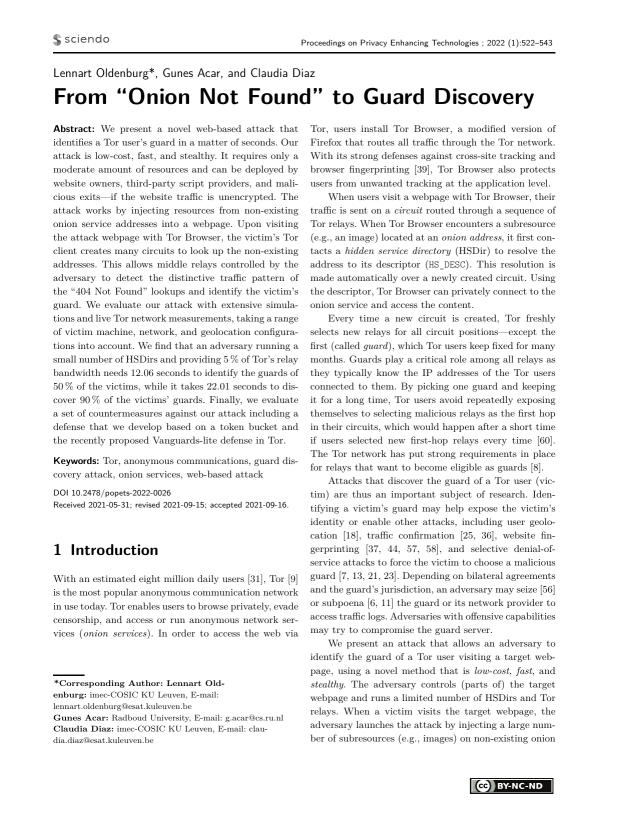From “Onion Not Found” to Guard Discovery
Authors: Lennart Oldenburg (imec-COSIC KU Leuven), Gunes Acar (Radboud University), Claudia Diaz (imec-COSIC KU Leuven)
Volume: 2022
Issue: 1
Pages: 522–543
DOI: https://doi.org/10.2478/popets-2022-0026
Abstract: We present a novel web-based attack that identifies a Tor user’s guard in a matter of seconds. Our attack is low-cost, fast, and stealthy. It requires only a moderate amount of resources and can be deployed by website owners, third-party script providers, and malicious exits—if the website traffic is unencrypted. The attack works by injecting resources from non-existing onion service addresses into a webpage. Upon visiting the attack webpage with Tor Browser, the victim’s Tor client creates many circuits to look up the non-existing addresses. This allows middle relays controlled by the adversary to detect the distinctive traffic pattern of the “404 Not Found” lookups and identify the victim’s guard. We evaluate our attack with extensive simulations and live Tor network measurements, taking a range of victim machine, network, and geolocation configurations into account. We find that an adversary running a small number of HSDirs and providing 5 % of Tor’s relay bandwidth needs 12.06 seconds to identify the guards of 50 % of the victims, while it takes 22.01 seconds to discover 90 % of the victims’ guards. Finally, we evaluate a set of countermeasures against our attack including a defense that we develop based on a token bucket and the recently proposed Vanguards-lite defense in Tor.
Keywords: Tor, anonymous communications, guard discovery attack, onion services, web-based attack
Copyright in PoPETs articles are held by their authors. This article is published under a Creative Commons Attribution-NonCommercial-NoDerivs 3.0 license.


